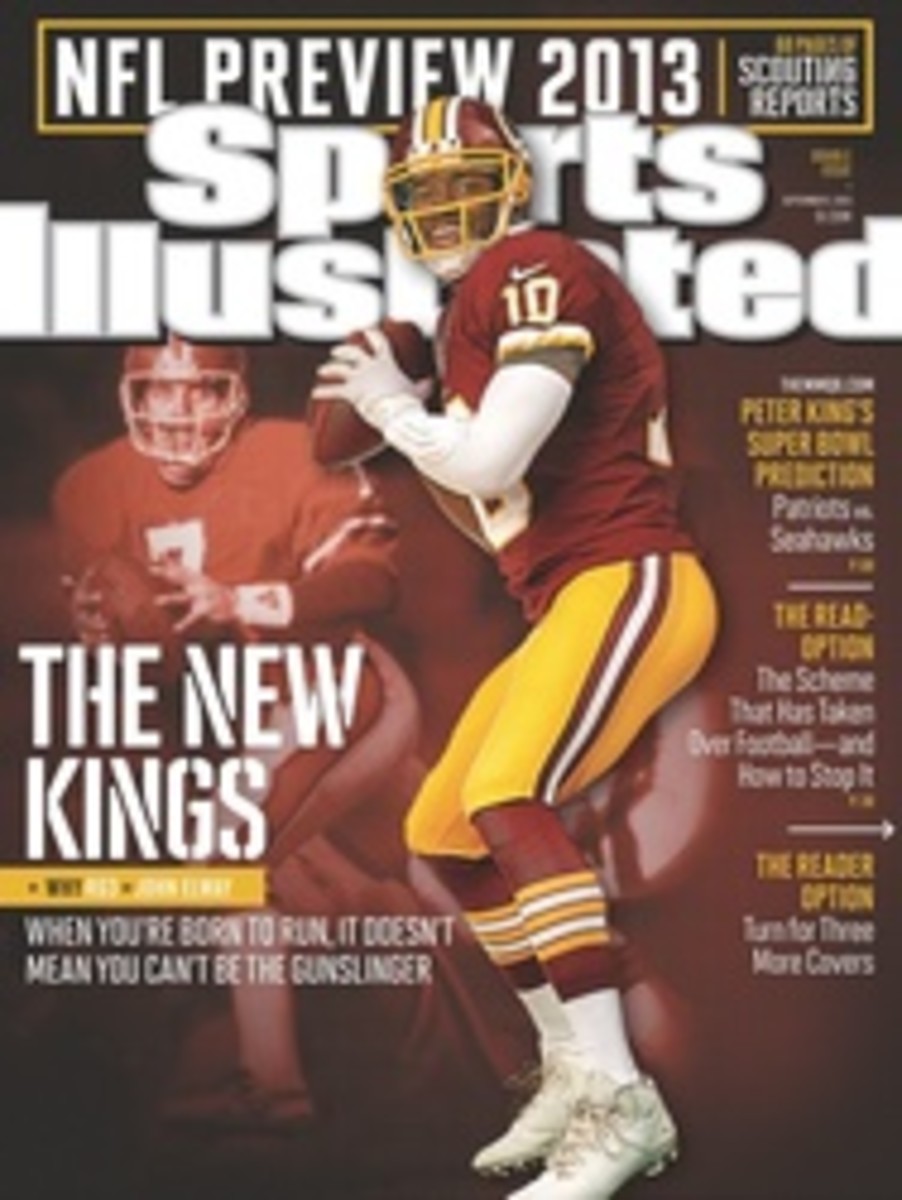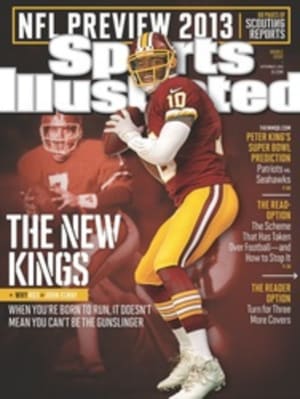
16 Oakland RAIDERS
RAIDERS defensive coordinator Jason Tarver was being interviewed at training camp when a reporter's digital recorder ran out of memory. After the scribe fumbled in search of a backup, Tarver suggested a solution. "Use the recorder on your phone," he offered.
For Tarver it's all about being able to adjust in the moment, which is fitting considering the record number of changes he has to deal with this season. A year after allowing the third-most offensive points in the league, Oakland will field a minimum of nine new starters, all brought in through free agency.
The decision to overhaul the D from outside the organization was antithetical to second-year G.M. Reggie McKenzie's building philosophy. McKenzie is a disciple of the Packers' Way from his 17 seasons in the Green Bay organization; the Packers largely eschew free agency in favor of building for the long term through the draft. But when a franchise has had 10 straight nonwinning seasons, including a 4--12 finish last year, philosophy takes a backseat to reality. The Raiders need to turn things around—or maybe, simply, to turn back the clock, to 2002, the only other year in the modern era that a team changed as many as nine primary defensive starters in one year. That team was the Raiders, who went to Super Bowl XXXVII.
No one is thinking Super Bowl in 2013. Six wins would represent success, considering that in addition to the wholesale changes on defense, Oakland will send out a new starting quarterback for the third straight opening game. Matt Flynn, acquired in a trade with Seattle, replaces Carson Palmer, who replaced Jason Campbell.
The camp reviews on Flynn were mixed, in part because the line struggled to protect him. (Terrelle Pryor, who outplayed him in the preseason, could push for his spot.) The line could be a seasonlong issue if left tackle Jared Veldheer misses significant time after having August surgery to repair a torn triceps. Still, coach Dennis Allen believes Flynn—despite his lack of arm strength, size and experience—has the temperament, competitiveness and football acumen to, at the least, manage games and keep from making bad situations worse.
Still, that blueprint requires a defense that can keep games close into the fourth quarter. Oakland had positive moments late last season, but the unit allowed 18 rushing TDs, tied for third most in the NFL, and 28 through the air, more than all but seven teams. Which explains that record number of changes.
The challenge of molding so many new players into a cohesive unit is significant, but Tarver is excited about it. He likes that he has a good mix of young, mid-level and veteran players in the meeting rooms. He also likes how the experience of his newcomers should allow for adjustments to be made mid-game. Linebacker Nick Roach is a fast, physical player who should help against the run, and Kevin Burnett has played in at least four different schemes, so he's quick at absorbing concepts. Free safety Charles Woodson, even at 36, can cover tight ends or drop down and match up on a receiver in the slot.
For all the changes, the defense remains thin up front, however—so thin that at one point in training camp it had only two healthy tackles. That's a concern because Oakland was so porous against the run last season. Then there's the pass rush. The Raiders ranked 31st among 32 teams in sacks last season, with only 25, and there is no proven edge rusher on the current roster.
Tarver says a key to pressing QBs is having the entire D work as one. That starts with linemen getting their hands up with the QB's release. He also believes his defense—compared with last year, at least—is more athletic on the second and third levels, which means he can use more 'backers and DBs in blitz packages. Lastly, he believes improved communication will help the overall pass coverage.
"Everything is about how we'll react when things are hard," Tarver says. "When Peyton Manning has the ball in the fourth quarter and he's driving, what are you going to do? We believe that men like Nick Roach and Charles Woodson and [SS] Tyvon Branch will rise up, and when they do, the other guys will rise up with them. Our belief is that we have the right people."
If nothing else, they have a lot of new people.
THE CASE FOR...
Running back Darren McFadden
When healthy, McFadden was a force in 2010 and '11 under former coach Hue Jackson, averaging at least 5.2 yards a carry each season. But after Jackson's departure, new coordinator Greg Knapp switched in '12 from a gap-blocking scheme to a zone-blocking one, and McFadden has never looked less comfortable than he did averaging a career-low 3.3 yards per carry last year, appearing totally out of sync along the way. Three things point to a renaissance in '13, provided McFadden remains healthy (which is a big if). First, Knapp was fired and replaced by Greg Olson, who spent '12 in Jacksonville and who plans to return to gap blocking. Second, Tony Sparano, one of the game's better offensive tutors, was hired to coach the line. And third, Run DMC is in a contract year. "If we can stay in the game in the fourth quarter, I'd like to believe that if we give him enough touches, and he's worn somebody down, he's going to get you that explosive play at the end of the game to win," says Olson. "We plan on getting him the ball."
SINCE YOU'VE BEEN GONE
(N) New acquisition
PHOTO
JOHN W. MCDONOUGH/SPORTS ILLUSTRATED
FS CHARLES WOODSON
PHOTO
KIRBY LEE/IMAGE OF SPORT/USA TODAY SPORTS

